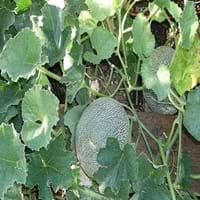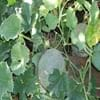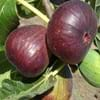Life Span
Annual
Perennial
Type
Fruit
Bulb or Corm or Tuber
Origin
Hybrid origin, Africa
South America
Types
Cantaloupe, Hami Melon, Galia Melon
Pamianthe cardenasii , Pamianthe parviflora , Pamianthe peruviana
Number of Varieties
Not Available
Habitat
Cultivated Beds
All sorts of environments
USDA Hardiness Zone
9-11
8-10
Sunset Zone
2a, 2b, 3a, 3b, 4, 5, 6, 7, 8, 9, 10, 11, 12, 13, 14, 15, 16, 17, 18, 19, 20, 21, 22, 23, 24
21,22
Habit
Vining/Climbing
Clump-Forming
Flower Color
Yellow, Gold
White
Flower Color Modifier
Bicolor
Bicolor
Fruit Color
Light Yellow, Tan
Green
Leaf Color in Spring
Green, Light Green
Dark Green
Leaf Color in Summer
Green, Light Green
Light Green
Leaf Color in Fall
Green, Light Green
Several shades of Green
Leaf Color in Winter
Light Green
Light Green
Leaf Shape
Heart-shaped
Strap shaped
Plant Season
Summer, Fall
Spring, Summer, Fall
Sunlight
Full Sun
Partial Sun, Partial shade
Growth Rate
Very Fast
Fast
Type of Soil
Loam
Loam, Sand
The pH of Soil
Neutral
Acidic, Neutral, Alkaline
Soil Drainage
Well drained
Average
Bloom Time
Indeterminate
Spring, Late Spring, Early Summer, Summer, Late Summer
Tolerances
Drought
Drought
Where to Plant?
Ground
Ground, Pot
How to Plant?
Seedlings
Offsets
Plant Maintenance
Medium
Medium
Watering Requirements
Reduce watering once fruit are growing, Water in the early morning hours
Keep the ground moist but not water-logged
In Summer
Lots of watering
Lots of watering
In Spring
Moderate
Moderate
In Winter
Average Water
Average Water
Soil pH
Neutral
Acidic, Neutral, Alkaline
Soil Type
Loam
Loam, Sand
Soil Drainage Capacity
Well drained
Average
Sun Exposure
Full Sun
Partial Sun, Partial shade
Pruning
Cut old vines, Remove damaged fruit
Pinch or prune as they grow to promote branching and bushiness, Remove damaged leaves, Remove dead branches, Remove dead leaves, Requires little pruning
Fertilizers
Apply N-P-K
All-Purpose Liquid Fertilizer, High phosphorus
Pests and Diseases
Aphids, Cucumber beetles, Fusarium wilt
Leaf spot, Mosaic viruses
Plant Tolerance
Drought
Drought
Flower Petal Number
Single
Single
Foliage Texture
Coarse
Coarse
Foliage Sheen
Matte
Glossy
Attracts
Ants
Bees, Birds, Bumblebees, Butterflies, Hummingbirds, pollinators
Allergy
Dizziness, Mouth itching, Nausea
Unknown
Aesthetic Uses
Not Used For Aesthetic Purpose
Beautification, Bouquets, Ornamental use, Showy Purposes
Beauty Benefits
Good for skin, Hair Conditioner, Stops hair loss
No Beauty Benefits
Environmental Uses
Air purification
Air purification
Medicinal Uses
Antitussive, Digestive, Diuretic, Emetic, Febrifuge, Stomachic
No Medicinal Use
Part of Plant Used
Fruits, Seeds
Not Available
Other Uses
For making oil for cosmetics
Beneficial species for attracting pollinators, Decoration Purposes
Used As Indoor Plant
No
No
Used As Outdoor Plant
Yes
Yes
Garden Design
Edible, Fruit / Fruit Tree, Herb / Vegetable, Vine
Bog Garden, Container, Feature Plant, Foundation, Mixed Border, Water Gardens
Botanical Name
CUCUMIS melo 'Super 45'
HYMENOCALLIS longipetala
Common Name
Muskmelon
Peruvian Daffodil, Spiderlily
In Hindi
खरबूजा
peruvian daffodil
In German
Muskmelon
peruvian daffodil
In French
Cantaloup
peruvian daffodil
In Spanish
Melón
Pamianthe
In Greek
Muskmelon
peruvian daffodil
In Portuguese
Melão
peruvian daffodil
In Polish
Muskmelon
peruvian daffodil
In Latin
Muskmelon
peruvian daffodil
Phylum
Magnoliophyta
Magnoliophyta
Class
Magnoliopsida
Liliopsida
Order
Cucurbitales
Asparagales
Family
Cucurbitaceae
Amaryllidaceae
Clade
Angiosperms, Eudicots, Rosids
Angiosperms, Monocots
Tribe
Melothrieae
Clinantheae
Subfamily
Cucurbitoideae
Amaryllidoideae
Number of Species
Not Available
Not Available
Season and Care of Muskmelon and Peruvian Daffodil
Season and care of Muskmelon and Peruvian Daffodil is important to know. While considering everything about Muskmelon and Peruvian Daffodil Care, growing season is an essential factor. Muskmelon season is Summer and Fall and Peruvian Daffodil season is Summer and Fall. The type of soil for Muskmelon is Loam and for Peruvian Daffodil is Loam, Sand while the PH of soil for Muskmelon is Neutral and for Peruvian Daffodil is Acidic, Neutral, Alkaline.
Muskmelon and Peruvian Daffodil Physical Information
Muskmelon and Peruvian Daffodil physical information is very important for comparison. Muskmelon height is 20.30 cm and width 150.00 cm whereas Peruvian Daffodil height is 61.00 cm and width 61.00 cm. The color specification of Muskmelon and Peruvian Daffodil are as follows:
Muskmelon flower color: Yellow and Gold
Muskmelon leaf color: Green and Light Green
Peruvian Daffodil flower color: White
- Peruvian Daffodil leaf color: Dark Green
Care of Muskmelon and Peruvian Daffodil
Care of Muskmelon and Peruvian Daffodil include pruning, fertilizers, watering etc. Muskmelon pruning is done Cut old vines and Remove damaged fruit and Peruvian Daffodil pruning is done Pinch or prune as they grow to promote branching and bushiness, Remove damaged leaves, Remove dead branches, Remove dead leaves and Requires little pruning. In summer Muskmelon needs Lots of watering and in winter, it needs Average Water. Whereas, in summer Peruvian Daffodil needs Lots of watering and in winter, it needs Average Water.





